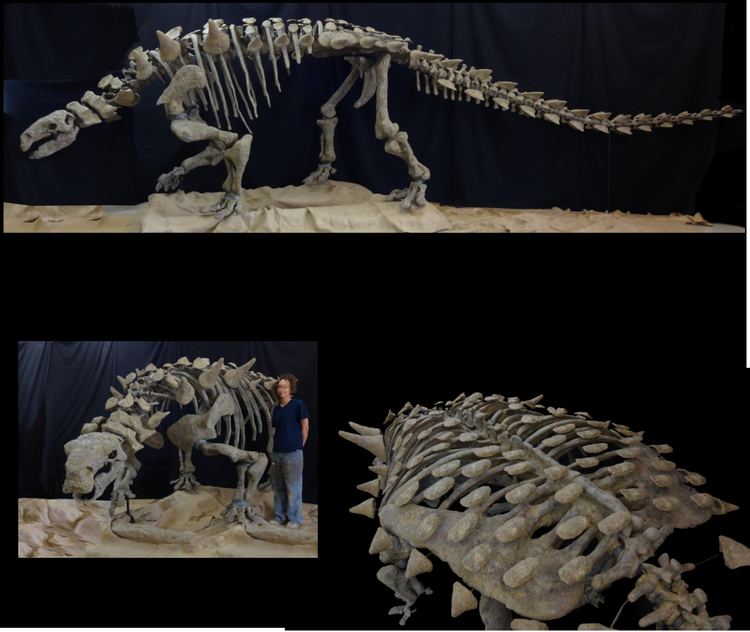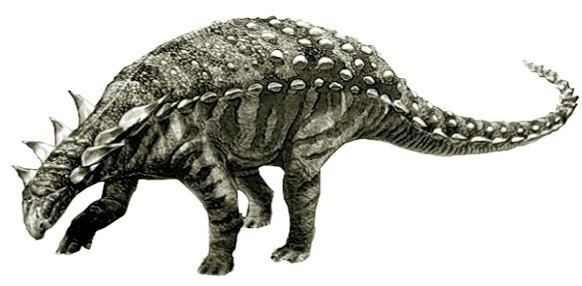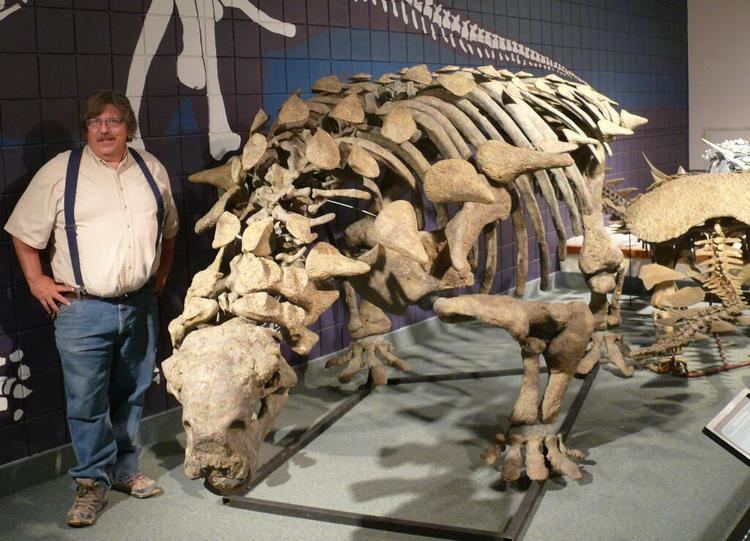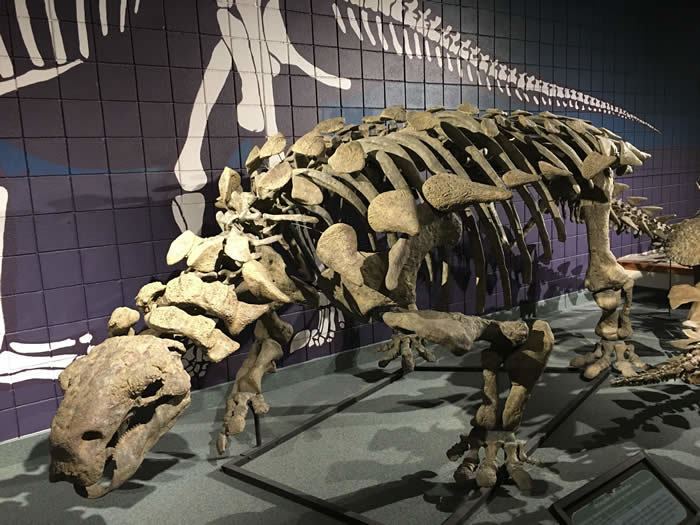Kingdom Animalia Clade Dinosauria Subfamily †Polacanthinae Phylum Chordata Order Ornithischia | Class Reptilia Family †Nodosauridae Species †P. cedrimontanus Rank Genus | |
 | ||
Similar Texasetes, Niobrarasaurus, Cedarpelta, Glyptodontopelta, Animantarx | ||
Peloroplites (from Greek pelor "monster", and hoplites, "armoured soldier") is a genus of nodosaurid armored dinosaur from Lower Cretaceous rocks of Utah. It is known from a partial skull and partial postcranial remains from the base of the Mussentuchit Member of the Cedar Mountain Formation, deposited during the Albian-Cenomanian boundary, about 104.46 to 98.37 million years ago, and was found in Emery County, Utah. It was named in 2008 by Kenneth Carpenter and colleagues.
Contents

Peloroplites was about 5 to 5.5 meters (16 to 18 ft) long, comparable to its approximate contemporary Sauropelta. It is one of the largest known nodosaurids, and came from a time when ankylosaurians in general were attaining large sizes.

DescriptionEdit

Peloroplites is based on CEUM 26331, a partial skull, with numerous postcranial bones recovered from the same quarry. These specimens were designated paratypes. The type species is P. cedrimontanus, in reference to the Cedar Mountain Formation.

The skull was about 56 centimeters (22 inches) long, and 35.5 centimeters (14.0 inches) wide between the eyes. It lacked beak teeth, and had only modest horn-like projections. The top of the skull was only slightly domed, and the only preserved upper cheek tooth was large and similar to teeth assigned to Priconodon, another large nodosaurid from about the same time. The lower jaws are represented by their rear halves, and were heavily built.
Of the postcranial skeleton, bones from all areas of the body are represented, except the hind foot. Six fused vertebrae supported the hip, as in Silvisaurus. The ilia, the largest bones of the hip, appear to have been flared out unusually, at 55° compared to the ~30° or ~40° degrees of other nodosaurids, but this could be a preservational accident. Unlike most other nodosaurids, the ulna was long and straight, and the major ankle bone (the astragalus) was not fused to the shin.
Paleobiology and paleoecologyEdit
Peloroplites was found in mudstone, in a quarry that also produced fossils of a turtle, a pterosaur, four individuals of a new brachiosaurid sauropod, the basal ankylosaurid Cedarpelta, and an iguanodont ornithopod. Ankylosaurians attained large sizes at the Aptian-Albian boundary; both Peloroplites and Cedarpelta are comparable in size to Sauropelta, a nodosaurid from about the same time but known from the Cloverly Formation of Wyoming and Montana. In fact, isolated bones from older levels of the Cedar Mountain Formation, assigned to Sauropelta, may actually pertain to Peloroplites.
Ankylosaurians are usually interpreted as low-browsing quadrupedal herbivores. The large teeth and robust jaws of Peloroplites suggest that it was consuming tougher forage than other ankylosaurians.
